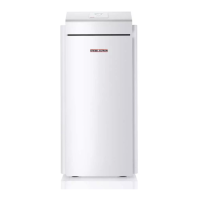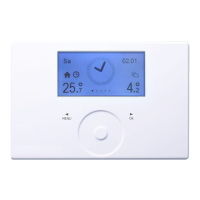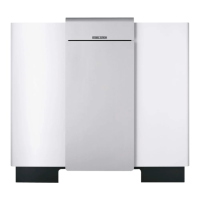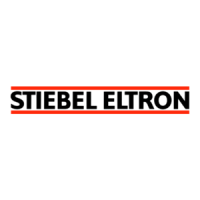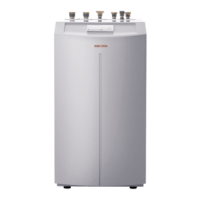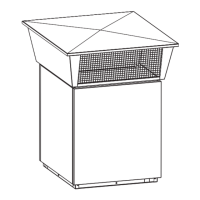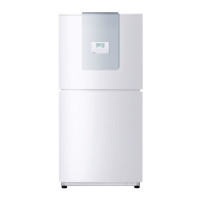INSTALLATION
Installation
10 | WPE-I H(K) 230 Premium www.stiebel-eltron.com
9.4 Installing the heat source system
Note
Engineer the heat source system for the appliance ac-
cording to the technical guides.
Note
The output data specified in the data table (see "Specifi-
cation/ Data table") refer to ethylene glycol. These details
will vary as a result of different viscosity and thermal
conductivity properties.
Permitted brine:
Part number
MEG 10 Heat transfer medium as concentrate on
an ethylene glycol base
231109
MEG 30 Heat transfer medium as concentrate on
an ethylene glycol base
161696
PG 10 Heat transfer medium as concentrate on a
polypropylene glycol base
236307
PG 30 Heat transfer medium as concentrate on a
polypropylene glycol base
236306
9.4.1 Circulation pump and required flow rate
The flow rate is automatically controlled by the heat pump man-
ager. The circulation pump cannot be set manually.
9.4.2 Connection and filling with brine
Thoroughly flush the pipework with brine before connecting
the heat pump to the heat source circuit. Foreign bodies,
such as rust, sand and sealant, can impair the operational
reliability of the heat pump. We recommend installing our
WPSF brine charging unit in the heat source inlet (see chap-
ter "Appliance description/ Accessories").
To facilitate easy connection to the brine circuit, the appliance
is supplied with push-fit connectors (see chapter "Installation/
Fitting push-fit connectors").
The brine volume of the heat pump under operating conditions can
be found in the data table (see chapter "Specification").
The overall volume is equal to the required amount of brine made
by mixing undiluted glycol and water. The chloride content of the
water must not exceed 300ppm.
Mixing ratio
The brine concentration varies depending on whether a geother-
mal collector or a geothermal probe is used as the heat source.
For the mixing ratio see the table below.
Ethylene glycol Water
Geothermal probe 25 % 75 %
Geothermal collector 33 % 67 %
Propylene glycol Water
Geothermal probe 27.5% 72.5%
Geothermal collector 36.5% 63.5%
Charging the brine circuit
Note
Insulate the brine lines with diffusion-proof thermal
insulation.
Note
The system fill pressure must be higher than the pre-
charge pressure plus the maximum pressure differential
of the brine pump.
Note
For geothermal probes, the diaphragm expansion vessel
is suitable for a fill volume of up to 600l.
The integral diaphragm expansion vessel is opened and sealed
at the factory.
Check the pre-charge pressure (set pressure: 0.5bar) of the
diaphragm expansion vessel on the brine side.
If necessary, adjust the pre-charge pressure.
The ground source heat pump is equipped with a brine pressure
switch in the brine circuit. The brine pressure switch prevents
brine getting into the ground if there is a leak in the brine circuit.
If the pressure in the brine circuit falls below 0.7bar, the brine
pressure switch turns the heat pump off. In order for the heat
pump to be enabled again, the pressure must be raised to at least
1.5bar while the heat pump is on standby.
To prevent the brine pressure switch turning the heat pump off
when there is no leak, charge the heat source side of the heat
pump during installation with a minimum pressure of >1.5bar.
Charge the system according to the following curve to pre-
vent an unintentional response from the brine pressure
switch.
0
0,5
1
1,5
2
2,5
3
0 200 400 600 800
D0000058692
X System volume [l]
Y Charge pressure [bar]
1 Required fill pressure depending on system volume at 33%
brine
2 Required fill pressure depending on system volume at 25%
brine
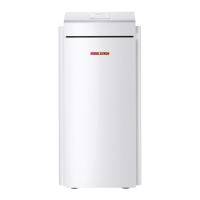
